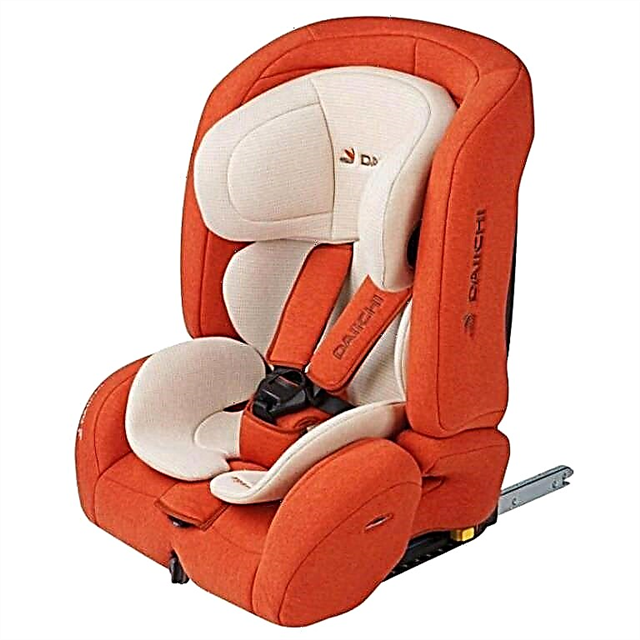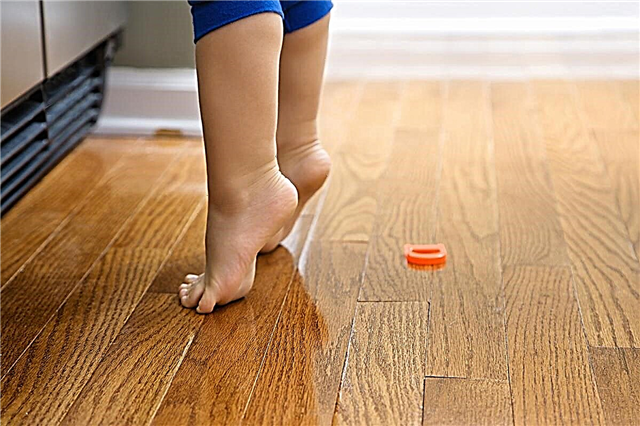Walking is a stage that all mothers are waiting for. This is the boundary between infancy and early childhood. And what could be more attractive than watching a cute child walk? But mom is mom. Even when it’s time to enjoy her baby’s newfound freedom, mommy will find something to worry about - for example, when the baby starts to walk on tiptoes. Toddlers walk on tiptoe as they learn to walk by holding onto furniture. But does tiptoe walking require medical intervention, or is it just a phase of the learning process? If the child walks on tiptoe, this is the norm. But also, in some cases, you may need to consult a specialist.
Tip-toe walking assumes that the child is walking on toes or not touching the heel with the surface when taking a step. It is considered "normal" between the ages of 2 and 3.
Causes
They can be divided into 4 groups:
- Neurological conditions - infantile cerebral palsy, muscular dystrophy and other movement disorders. In these conditions, the muscles of the calves in the child are stiff, because of this, it is difficult or impossible for the baby to lower the heel onto a hard surface. Therefore, to take a step, the child stands on tiptoe.
- Orthopedic diseases - inflammation of the calcaneus, short heel tendon, clubfoot. In this case, structural changes in the foot make it impossible or painful for the heel to descend to the surface.
- Behavioral Disorders (Autism) If the child begins to walk on tiptoes, it may be a manifestation of certain symptoms, many of which come with autism.
- Idiopathic tiptoe walking.
There are cases when healthy children, without any diseases, still stubbornly walk on their fingers. This is known as idiopathic toe-walking and is diagnosed by excluding all other diseases that cause this type of walking.
 Idiopathic tiptoe walking suggests that the child often stands on tiptoes when walking due to the habit. Also, some studies indicate that family members also have this trait.
Idiopathic tiptoe walking suggests that the child often stands on tiptoes when walking due to the habit. Also, some studies indicate that family members also have this trait.
The most common occurrence in a child with idiopathic toe-walking is stiff lower leg muscles. This makes it even more difficult to lower the heel to the surface and can cause pain when trying to exercise.
Idiopathic walking can be associated with hypersensitivity or hyposensitivity. Some children may not like touching different surfaces with their feet. And then the child stands on tiptoes to avoid full touch of the foot.
When should i see a doctor?
If you are worried, talking to your doctor will not do any harm.
But make an appointment as soon as possible in the following cases:
- if the child walks on tiptoes most of the time;
- when feeling with your fingers, you feel that the baby has stiff muscles of the lower leg;
- the child is not coordinated;
- the child stumbles constantly;
- the baby shows signs of delayed development of motor skills;
- the child cannot transfer body weight to his leg;
- the baby has lost the motor skills that he already had.
The doctor will test the child for cerebral palsy and other serious causes of tiptoe walking. He may also recommend contacting a speech therapist, as speech delay often accompanies this method of walking.
Treatment
The effectiveness of therapy depends on a number of factors.
 They can be used to determine the correction plan.
They can be used to determine the correction plan.
When drawing up such a plan, they are guided by the answers to the questions:
- what is the reason?;
- Does the baby's heels ever make contact with the ground or does the baby always walk on tiptoe?
- How stiff is the baby's calf muscles and have the muscles of the foot and ankle been affected?
When a child walks on tiptoes, what should be done?
Many of the treatment plans that a physician can prescribe for both idiopathic and causal toe-walking involve multiple modalities.
Exercise at home
Doing the exercises at home will be very beneficial for your child. They will allow the calf muscles to stretch and therefore strengthen the front of the legs. The exercises will provide additional range of motion and stability of the ankles, allow the child to step from heel to toe and stand firmly on his feet.
Stretching is the first step. After this, it is important that you and your child participate in activities and exercises that use the stretched muscles.
It is important to engage in activities that are fun and appropriate for the child's age. You can talk with a physical therapist for fun and innovative exercises you can do at home with your baby.
Massage
It will help children to fall on the heel when walking. It is better for a specialist to massage the legs of children with this way of walking. But if this is not possible, parents can perform the required manipulations themselves, having previously consulted with a pediatric masseur or chiropractor.

Massage sessions started on time in combination with other methods prescribed by the doctor will perfectly help to cope with this problem.
Footwear
The following types of footwear can help limit your child's desire to tiptoe:
- flat shoes. Refrain from using shoes with wedges or raised heels. The elevated position of the foot will initially contract the calf muscle and lead to standing on the toes. Flat shoes are ideal;
- squeaky boots. Some shoes have tweeters on the heels. The child gets additional pleasure by lowering the heel to the surface during a step;
- shoes that catch fire. Some brands of shoes are equipped with flashlights located at the back of the foot. The more the child descends on the heel while walking, the more the light comes on.
Surgery in treatment
If tip-toe walking is a symptom of a serious disorder, surgery may be needed. But first, the doctor will try to correct the problem with non-surgical methods. If he does not see improvement within 12 months, then he will recommend surgery. Surgery mainly focuses on lengthening the heel tendon.
Treatment plans
If the child is under the age of two, observation is by far the best treatment plan.
Therefore, when a child is 9 months old walks on tiptoes, you should not immediately sound the alarm. For now, just watch.
Children over 2 years of age should be screened for the development or presence of neurological disorders that could potentially explain tip-toe walking. If none of these are found, the walking method is described as idiopathic, meaning that no underlying cause can be identified.
Children with sock walking for idiopathic reasons over the age of two may continue to be monitored, especially if there is improvement. Or, you can do simple stretching and other exercises.
If these simple procedures fail, surgical lengthening of the heel tendon may be considered.
Forecast
In most cases, toe walking in children does not require any treatment. The child is more likely to develop a normal walking style on their own. But if you use the above treatment options, you may see improvement sooner.
If walking on your toes is associated with a cognitive or neurological disorder, it will take more time and effort to resolve the problem.
Walking on your toes in isolation is not a concern. It only becomes a problem when it is associated with a more serious health problem. The main thing is to seek medical attention as soon as you can.
With early intervention, cases of cerebral palsy and autism can become more manageable.
So don't neglect your child's toe-walking, don't take it as another childish quirk.
Regardless of the diagnosis, your child needs your love and support the most. Each baby is special and will react differently to any intervention. In other words, what is effective for one may be in vain for another. However, with proper support, patience, and good therapy, toe walking can be cured.
Article rating:



